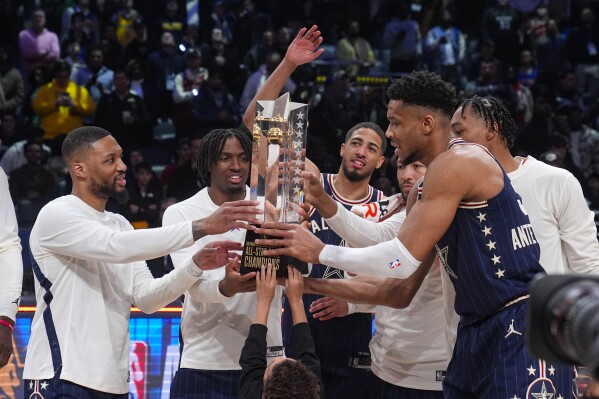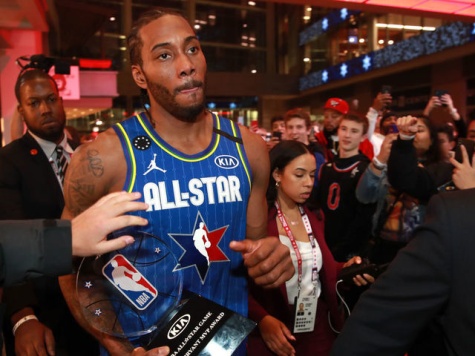
David Rudnicki | Sports Editor
February 25, 2024
In a spectacle of athleticism and scoring prowess, the recent NBA All-Star Game showcased a record-breaking performance, with the Eastern Conference trouncing the Western Conference in a jaw-dropping 211-186 victory. Despite a lineup boasting the likes of Curry, LeBron, and Durant, the West found themselves overwhelmed by a staggering 30-point deficit to their Eastern rivals, sparking renewed debate over the competitive nature of the annual exhibition.
“This further elucidates the idea of how the All-Star game is poor, and people don’t try,” remarked senior Desmond Lathen, echoing sentiments shared by many disillusioned fans. With players often accused of coasting through the game, critics argue that the lack of defense and intensity has become all too common in recent years.

Indeed, apart from the memorable charity All-Star game in 2020, every NBA All-Star contest in the past decade has left much to be desired in terms of competitiveness. “A casual run at 24 Hour Fitness looks more intense,” quipped Lathen, underscoring the prevailing sentiment among fans disenchanted with the spectacle.
Despite the criticism, a couple standout atheletes emerged from the fray. Damian Lillard, undeterred by the game’s lackluster reputation, delivered a stellar performance that earned him the coveted All-Star Game MVP title. Meanwhile, Stephen Curry clinched victory in a tightly contested three-point shootout, narrowly beating Sabrina Inescu in a display of long-range marksmanship. Additionally, Mac Maclung electrified the crowd by securing his second consecutive dunk contest triumph, showcasing his aerial acrobatics with flair.
However, amidst the excitement of individual accolades, calls for reform have grown louder. To inject renewed vigor into the All-Star Game, a proposal has emerged: maintain the traditional East versus West format but incentivize victory by awarding the winning conference home-court advantage in the NBA Finals. Senior Faizaan Ihani agreed that this “would drastically increase the intensity of the All-Star Game.”

Such a change could reignite the competitive fire that has waned in recent years, compelling players to approach the All-Star Game with greater intensity and purpose. By linking the outcome of the exhibition to a tangible reward with significant implications for postseason play, the league could foster a more compelling and meaningful showcase of its top talent.
As the NBA reflects on the spectacle of the recent All-Star Game and considers its future direction, the debate rages on: Can the exhibition evolve beyond its reputation for lackluster play, or will it continue to languish in a cycle of apathy and criticism? Only time will tell if the proposed reforms can breathe new life into one of basketball’s most celebrated traditions.

Leave a Reply